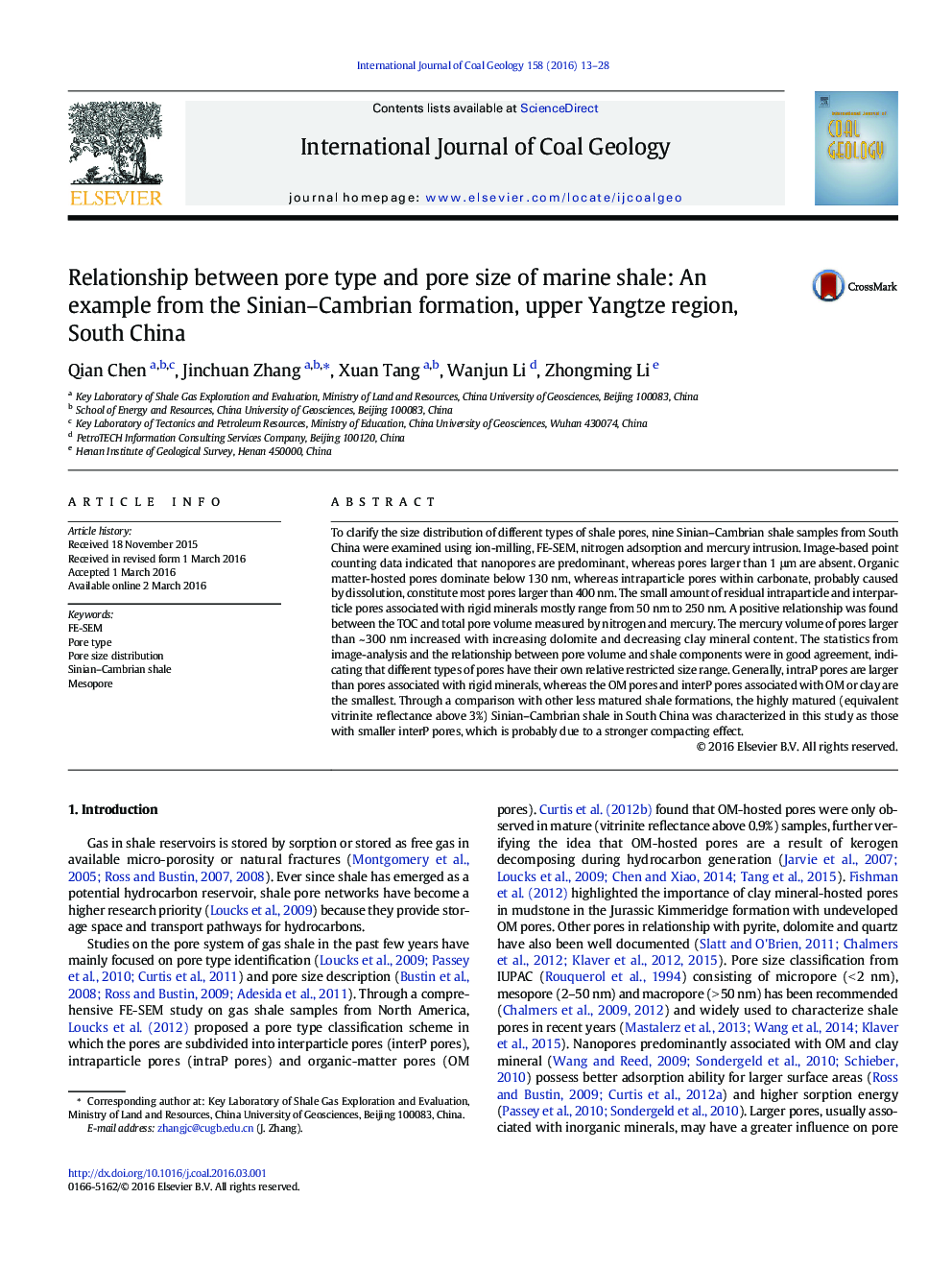| Article ID | Journal | Published Year | Pages | File Type |
|---|---|---|---|---|
| 1752790 | International Journal of Coal Geology | 2016 | 16 Pages |
•OM pores contribute most to the pore system of Sinian–Cambrian organic-rich shale.•Different types of pores in shale have their own relative restricted size range.•Overmature shale have smaller interP pores due to a stronger compacting effect.
To clarify the size distribution of different types of shale pores, nine Sinian–Cambrian shale samples from South China were examined using ion-milling, FE-SEM, nitrogen adsorption and mercury intrusion. Image-based point counting data indicated that nanopores are predominant, whereas pores larger than 1 μm are absent. Organic matter-hosted pores dominate below 130 nm, whereas intraparticle pores within carbonate, probably caused by dissolution, constitute most pores larger than 400 nm. The small amount of residual intraparticle and interparticle pores associated with rigid minerals mostly range from 50 nm to 250 nm. A positive relationship was found between the TOC and total pore volume measured by nitrogen and mercury. The mercury volume of pores larger than ~ 300 nm increased with increasing dolomite and decreasing clay mineral content. The statistics from image-analysis and the relationship between pore volume and shale components were in good agreement, indicating that different types of pores have their own relative restricted size range. Generally, intraP pores are larger than pores associated with rigid minerals, whereas the OM pores and interP pores associated with OM or clay are the smallest. Through a comparison with other less matured shale formations, the highly matured (equivalent vitrinite reflectance above 3%) Sinian–Cambrian shale in South China was characterized in this study as those with smaller interP pores, which is probably due to a stronger compacting effect.
